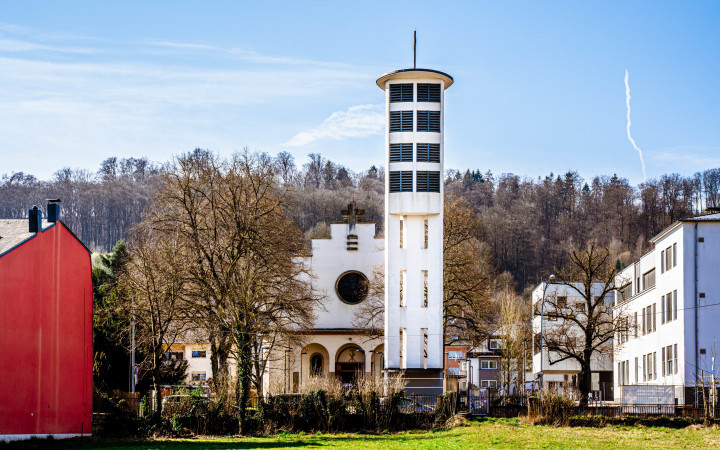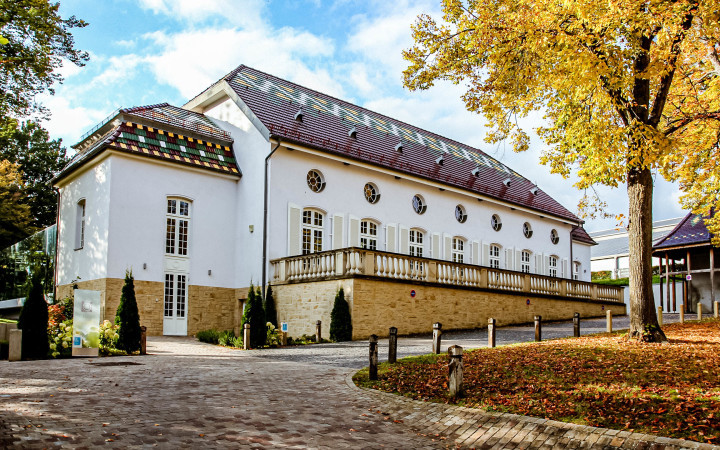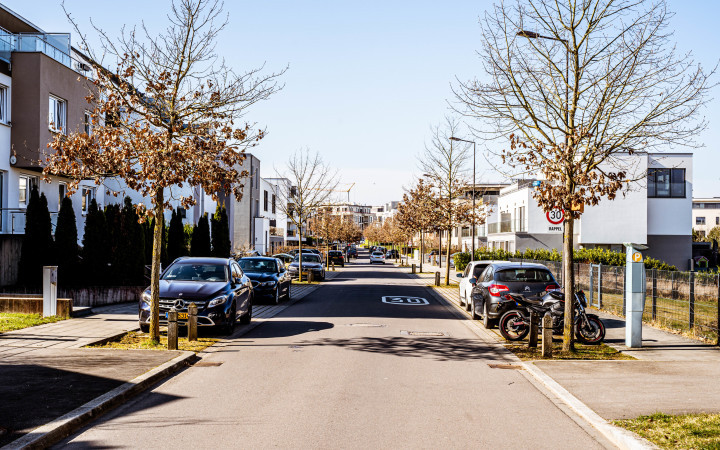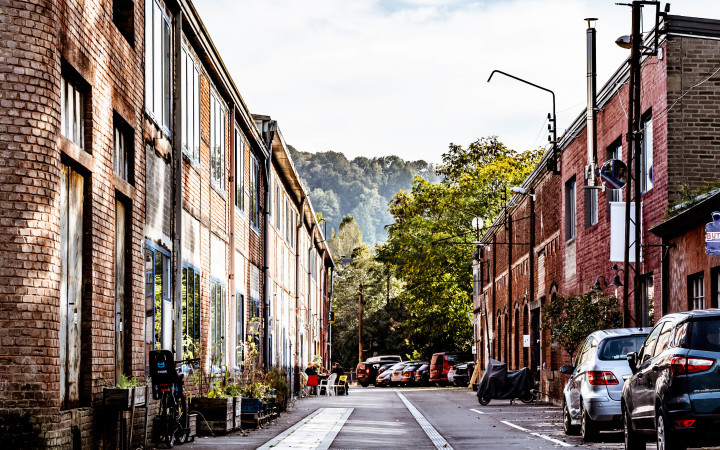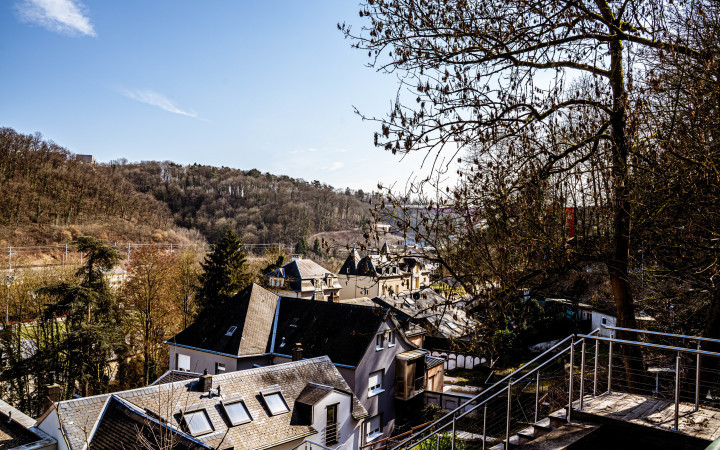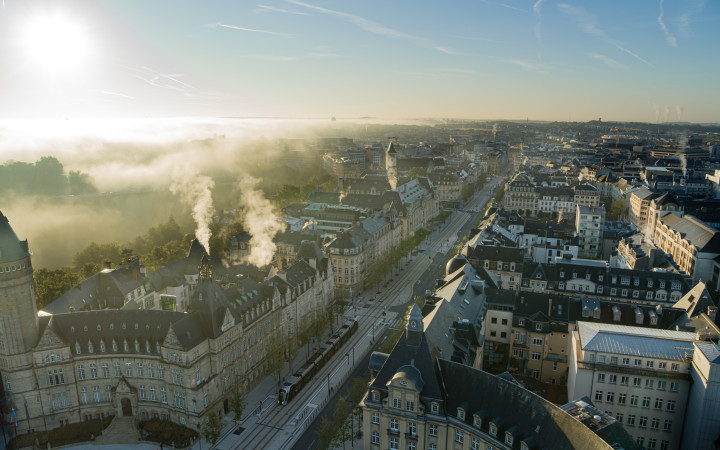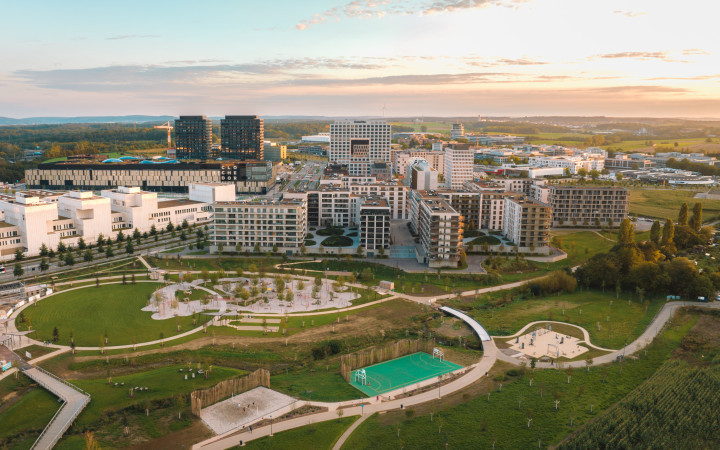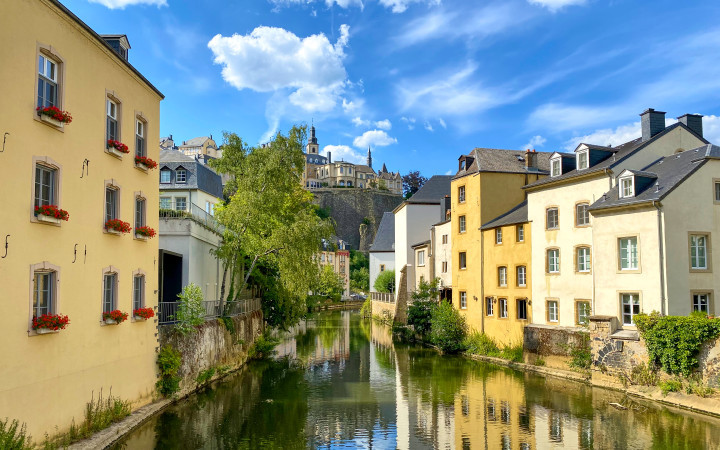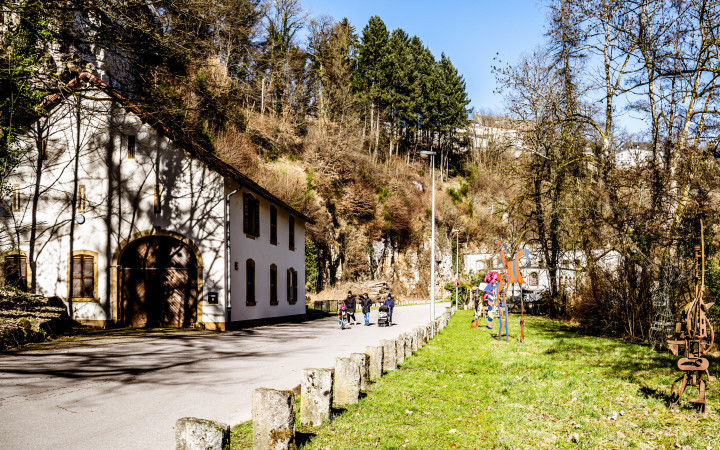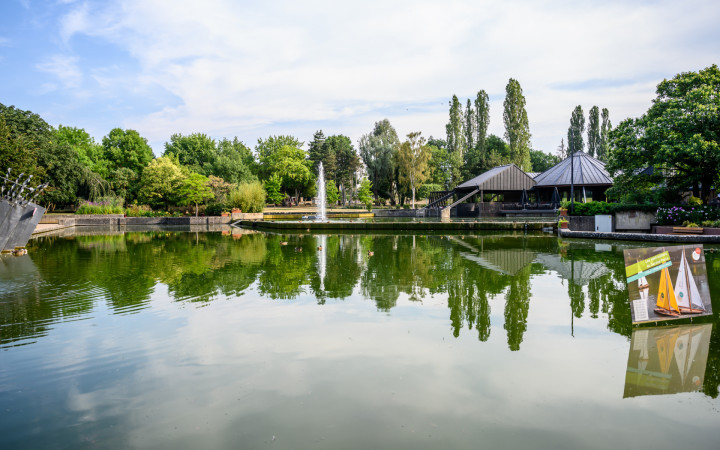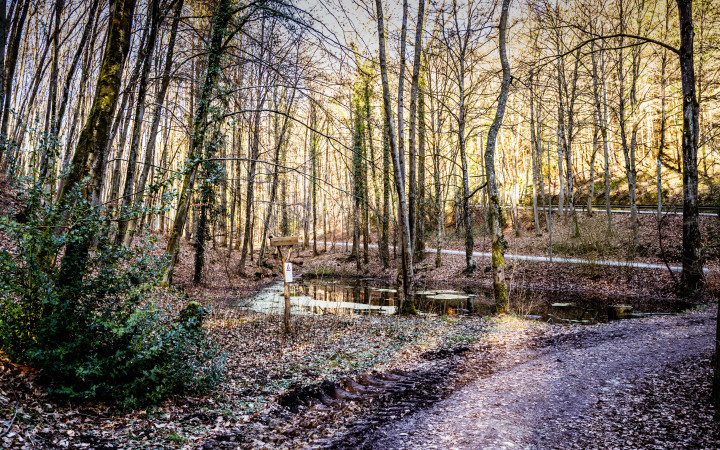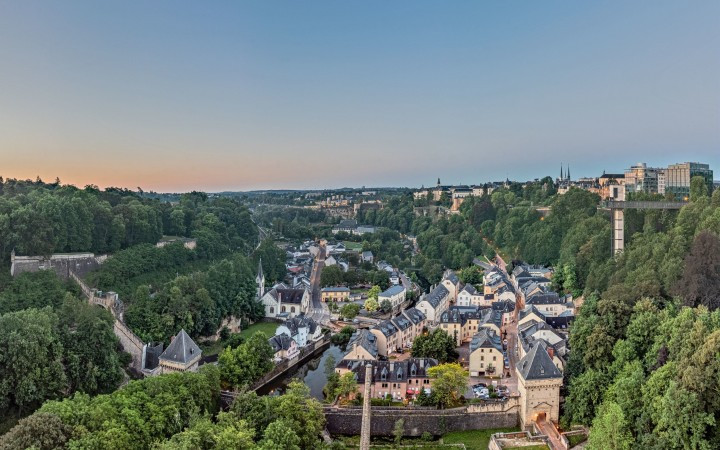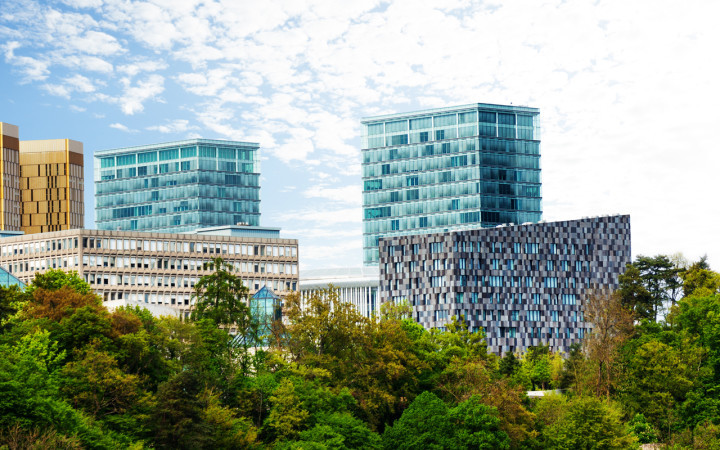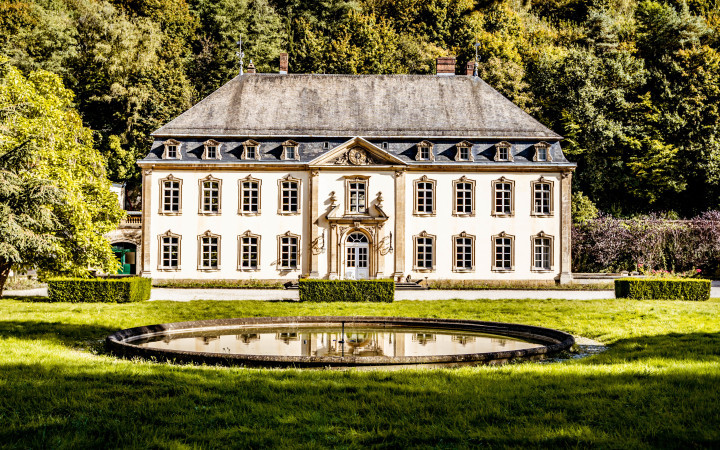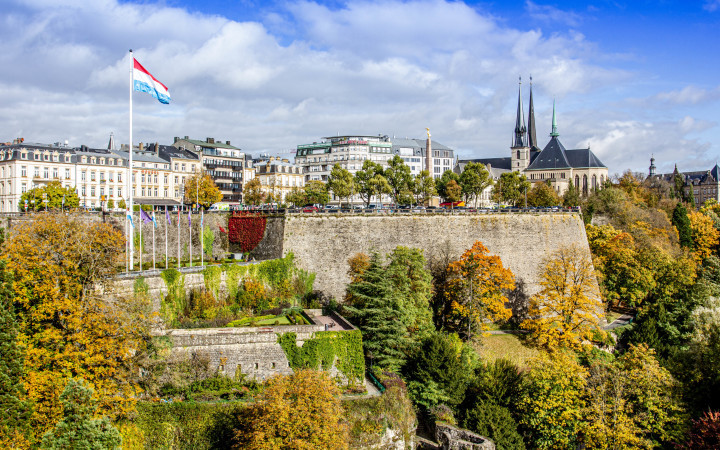
Pulvermühl
Luxembourg’s smallest district, Pulvermuhl (or Polvermillen in Luxembourgish), lies in a picturesque spot in the Alzette valley, popular with evening and weekend joggers, cyclists and canoeists.
A hidden gem in the Alzette valley
In the seclusion of the valley, below the city centre, a fitness trail and cycle path meander along the river. There are also hiking trails here, with names like “Squirrel”, “Linden” and “Marten” – apt names, indeed, in this haven of nature.
During his visit to Luxembourg, Irish writer James Joyce was also enchanted by this hidden gem at the foot of the steep cliffs. He went on to immortalise this little corner of paradise in his novel Finnegan’s Wake.
The powder mills
The district name Pulvermühl, which translates into English as “powder mill”, can be traced back to a mill that appeared in the records in 1562. Since the Middle Ages, gunpowder had been produced in what were known as “powder mills”. The Luxembourg powder mill in the Alzette valley was where Peter Ernst I, Count of Mansfeld and Field Marshal of the Spanish armies, had charcoal milled for use in the production of black powder, aka gunpowder.
There is, however, another old spelling of the district name: Polffermillen, after a miller named Peter Polffer. Despite the fact that the medieval mill became an oil and flour mill after Mansfeld’s death, and subsequently a textile factory, it is the name Pulvermuhl that has survived and is now used for the present-day area of the capital that became a district in its own right in 1920.
Pulvermuhl is considered the birthplace of Luxembourg’s industrialisation, something that is hard to imagine today in the midst of such an idyllic setting. It was here in 1835 that the Godchaux brothers acquired a wool spinning mill and a wool weaving mill. Over the course of the 19th century, their textile mill “op der Schläifmillen” became the most important textile factory in the country. Gradually, the Godchaux family bought up all the mills in the valley – the Schleifmühle, Gantenbeinsmühle, Follmühle, Polvermillen and Bonnevoie mill – and transformed them into cotton mills.
Today, Pulvermuhl, a picturesque nook in the heart of the capital, is easy to get to. From the church in Hamm, it is just a 15-minute walk down into the verdant valley, formerly known as the Hammer Dällchen, with its imposing steep cliffs.

Join a guided tour!

Tour
Godchaux Circular Walk
Learn more about the beginnings of industrialisation in the suburbs of...
Photo gallery
How to get there ?
By car:
Find the best parking for your stay with our Luxembourg-city parking guidance system.
By public transport:
To go around the city, check out www.mobiliteit.lu which offers live and practical information on public transport in Luxembourg.
Useful information: all buses, trams and trains within the country of Luxembourg are free of charge for citizens and visitors alike.








